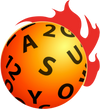Visual Attention Training: Helping Parkinson’s Patients Stay Mentally Sharp

One of the lesser-talked-about symptoms of Parkinson’s disease is mental fog—difficulty focusing, staying on task, or keeping up with conversations. While it’s easy to focus on physical symptoms like tremors or freezing, cognitive slowing and reduced attention span can be equally frustrating and isolating. The good news? New research is showing that training visual attention—through specific eye movement exercises—can help keep the brain sharper and more responsive.
Visual attention is your brain’s ability to focus on what matters in the environment—whether it’s reading, walking through a crowded room, or following a conversation. It’s a skill that relies heavily on eye movement control, especially the ability to fixate, shift, and reorient your gaze quickly. In Parkinson’s, this system often becomes sluggish or scattered, making it harder to stay mentally engaged or react to visual information efficiently.
Studies show that people with Parkinson’s often have impaired saccadic eye movements (quick shifts of gaze) and difficulty with sustained attention. These deficits can spill over into problems with concentration, memory, and decision-making. But here’s where it gets hopeful: by practicing exercises that involve targeted gaze control and attention shifts, the brain can rewire these systems. This kind of training activates the frontal and parietal networks responsible for focus, helping people with Parkinson’s stay mentally agile.
This is where the BrainSpeed Ball® comes in. As users track the ball, locate colored targets, and say what they see aloud, they’re doing more than just moving their eyes—they’re training their visual attention circuits. The quick response required by the BrainSpeed Ball® stimulates the brain’s “focus-and-respond” loop, which improves concentration, processing speed, and mental clarity. It’s a fun, low-stress way to exercise the brain’s ability to pay attention—and stay sharp.
Improving focus and attention doesn’t have to involve hours of brain games or cognitive drills. Eye movement training offers a research-supported, body-based solution that connects vision, brain function, and daily cognitive performance. For people with Parkinson’s, that means more confidence, quicker thinking, and a stronger connection to the world around them.
Learn about our Parkinson's Specific Training Program Here:
Sources:
Amick, M. M., Grace, J., & Chou, K. L. (2006). Cognitive domains associated with falling in Parkinson disease: A pilot study. Cognitive and Behavioral Neurology, 19(3), 145–150. https://doi.org/10.1097/01.wnn.0000213900.30844.0e
Briand, K. A., Strallow, D., Hening, W., Poizner, H., & Sereno, A. B. (1999). Control of voluntary and reflexive saccades in Parkinson’s disease. Experimental Brain Research, 129(1), 38–48. https://doi.org/10.1007/s002210050938

